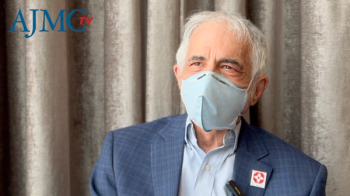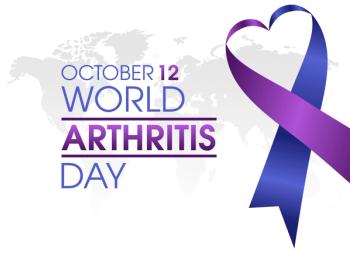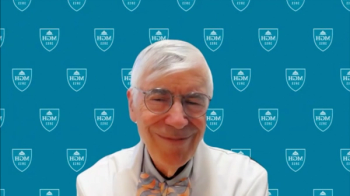
Despite advances, Arielle Kauvar, MD, calls for more research on laser and energy-based devices for patients with skin of color.

Brooke is an associate editor for The American Journal of Managed Care® (AJMC®). She joined AJMC in 2023, where she produces content covering multiple disease states.
She has a BA in journalism from Seton Hall University. You can connect with Brooke on LinkedIn.

Despite advances, Arielle Kauvar, MD, calls for more research on laser and energy-based devices for patients with skin of color.

Colorblind energy devices and long-wavelength lasers are safest for darker skin, says Ariella Kauvar, MD, with a thorough patient history and physical exam key to preventing complications.

Arielle Kauvar, MD, says pre- and post-treatment care helps prevent hyperpigmentation and complications from laser procedures for all skin types, including skin of color.

Persistent racial, ethnic, and socioeconomic disparities affect the incidence and mortality of major female-specific cancers in the US.

Patients beginning their cancer journeys should advocate for themselves and use support groups to help navigate survivorship challenges.

Long COVID is most common among adults with chronic conditions, lower physical activity, and incomplete vaccination, and who live in certain US regions.

Payer contracts should incentivize the delivery of comprehensive, total-person cancer care, says Brian Mulherin, MD.

Vivek Subbiah, MD, highlights key topics at the 50th European Society for Medical Oncology (ESMO) Congress, including the rise of tumor-agnostic therapies and the use of artificial intelligence (AI) in cancer care.

Arthritis care remains fragmented and costly, with access disparities prompting calls for preventive strategies, community resources, and systemic improvements.

Many cancer survivors face ongoing physical and mental health challenges, which peer support and online resources can help address, says Brian Koffman, MDCM, DCFP, FCFP, DABFP, MSEd.

Despite systemic challenges, oncology practices use value-based care, community partnerships, and clinical trials to improve patient access and outcomes, says Brian Mulherin, MD.

Experts at the Skin of Color Update highlighted the potential benefits of GLP-1 RAs in managing obesity, as well as psoriasis and hidradenitis suppurativa symptom management.

Vivek Subbiah, MD, says artificial intelligence (AI) should assist clinicians in precision oncology, not replace human decision-making.

Surgeons are more likely to perform opportunistic salpingectomy when their peers have done so, underscoring the impact of physician networks in ovarian cancer prevention.

US pediatric influenza-associated encephalopathy (IAE) cases surged during the 2024-2025 season, highlighting severe health risks and the need for better surveillance.

Artificial intelligence, automation, and expanded pharmacist roles help reduce administrative burdens, improve workflow, and support providers in delivering cancer care, according to Scott Soefje, PharmD, MBA, BCOP.

Artificial intelligence (AI) is expanding clinical trial access and enabling drug repurposing, according to Vivek Subbiah, MD.

Rilzabrutinib (Wayrilz; Sanofi) may improve immune thrombocytopenia (ITP) outcomes, enable early intervention, and enhance patient quality of life.

Scott Soefje, PharmD, MBA, BCOP, discusses how remote patient monitoring and caregiver support enable safe outpatient delivery of bispecific antibodies and antibody-drug conjugates.

Today, Amgen announced the launch of AmgenNow, a direct-to-patient program offering evolocumab (Repatha) at nearly 60% below the current US list price.

Three researchers received the 2025 Nobel Prize in Physiology or Medicine for discovering regulatory T cells and the Foxp3 gene, which revealed how the immune system prevents autoimmune disease.

FDA approvals since the last Skin of Color Update expand topical and biologic options for various dermatological conditions, benefiting patients with skin of color.

Stronger partnerships between primary care and oncology improve patient outcomes by ensuring coordinated care and addressing financial and systemic barriers, says Mark Fendrick, MD.

Reducing data silos and boosting transparency in oncology requires payer-provider trust and co-governance, according to Vishnukamal Golla, MD, MPH.

Five experts share their key takeaways from Patient-Centered Oncology Care® (PCOC) 2025, highlighting AI integration and collaboration to improve care.

Although overall costs have not declined with the Oncology Care Model (OCM), supportive care costs have decreased through greater use of cost-effective therapies.

Vivek Subbiah, MD, considers artificial intelligence (AI) and comprehensive somatic and germline testing essential for guiding precision oncology and improving patient care.

UC Davis pharmacy residents research medication management and patient care, focusing on how pharmacists improve outcomes and reduce readmissions, according to Jeremiah J. Duby, PharmD, BCPS, BCCCP.

Oncology pharmacists now work alongside providers to improve efficiency, patient education, and treatment outcomes, according to Scott Soefje, PharmD, MBA, BCOP.

Tory M. Wolff, MBA, discusses his study showing that frequent routine primary care visits may lower costs for higher-risk commercially insured adults.

259 Prospect Plains Rd, Bldg H
Cranbury, NJ 08512
© 2025 MJH Life Sciences®
All rights reserved.
